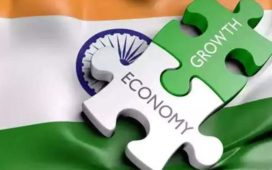Economists largely attributed the decline in August to the big jump in the year-earlier period. “The slowdown was on account of an unfavourable base,” said Rajni Sinha, chief economist, CareEdge. Sinha said heavy rain in August may have led to the slowdown in mining, which recorded a decline of 4.3%. Electricity output fell 3.7%.

Economists expect a pick-up in activity on the back of a normal monsoon and the onset of the festive season. “The impact of a healthy monsoon on rural demand is expected to kick in the second half of this fiscal, which would support consumption,” said DK Joshi, chief economist, Crisil. Domestic demand is expected to rise in the early part of the festive season, Sinha said. A broad-based improvement in consumption and private capital expenditure is crucial for driving industrial activity. Manufacturing growth slowed to 1%, the lowest in nearly two years.
Ind-Ra sees IIP returning to positive territory. High-frequency indicators suggest a pickup in industrial activity, Paras Jasrai of Ind-Ra said in a note.
11 of 23 sectors see decline
Although the manufacturing growth was down to a 22-month low, it came on a high base,” he said. “The growth of e-way bill and coal production improved to 18.5% year on year and 2.5% YoY in September 2024, respectively (August 2024: 12.9% YoY, negative 7.5% YoY),” he said, adding that the contraction in other indicators such as electricity demand and petroleum consumption has also reduced in the same period.Ind-Ra expects IIP growth of 3% in September from the year before. Eleven of the 23 IIP sectors, such as pharmaceuticals, paper, food and beverages, witnessed a decline. Growth in capital and infrastructure/construction goods declined to a nine-month low of 0.7% and 1.9%, respectively, in August, on an unfavourable base. Intermediate goods sector growth stood at 3.0% year on year in the same period.
The high base effect dragged down primary and consumer non-durable goods by 2.6% and 4.5%, respectively. Ind-Ra noted that a sustained decline in consumer non-durables indicated that the stress in rural demand hadn’t bottomed out yet. A steady growth in consumer durables was a positive for consumption demand. Consumer durable goods recorded the highest growth among use-based segments at 5.2% in August.










